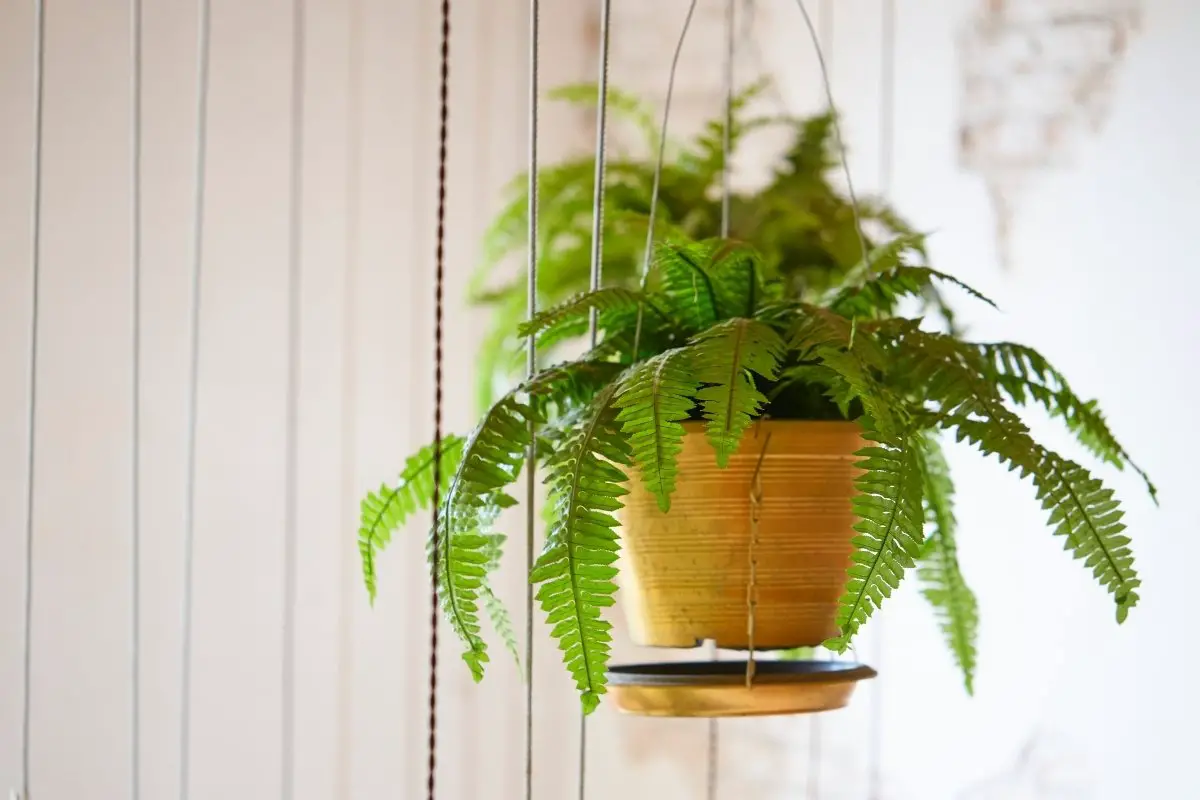Last Updated on May 5, 2022 by Cristina
If you’re growing Boston fern and you repot or transplant a matured Boston fern, you might have noticed the root noodles of this plant. Boston fern roots have balls that are around the size of a grape on their roots which are known as root noodles.
Boston fern which is also regarded as sword fern is a plant species of fern that is in the family Lamoriopsidaceae. It is native to regions that are tropical all over the world.
The plant of Boston is not only great for indoor decoration; it also has air-purifying features that can enhance the level of humidity by restoring moisture to the air in a natural way. This air-purifying effect can give relief to individuals that may be suffering from dry noses, sore throats, and dry skin.
Boston fern roots is what we will be talking about in this article. We will also discuss how you can propagate Boston fern using their roots.
Boston Fern: Interesting Facts About Them
Here are more features to know about the plant Boston fern:
-
-
Boston fern plants can attain a height of 40 to 90 cm and they can even go as high as 1.5 meters.
-
It is an indoor purifying fern plant. The plant helps keep our home safe from toxic substances such as toluene, xylene, and formaldehyde. This plant can even be of help to those suffering from dry skin, dry throat, or dry nose.
-
Boston plant is a perennial plant that is native to tropical regions all over the world.
-
Boston fern is a kind of common houseplant that is often used to decorate balconies and houses. The plant is great for hanging baskets or grown in containers. And there are about 30 tropical varieties of this plant.
-
This Boston houseplant grows pretty fast and it is a nice plant that is easy to maintain.
-
-
Boston fern plant is ideal to be grown indoors all year round and outdoors during warm seasons.
-
-
-
Boston has fronds that are bright green and they range from 6 inches to 6 feet long.
-
The plant of Boston naturally grows on Sabal and palmetto trees.
-
This amazing plant isn’t so susceptible to pests or diseases. Usually, the only insect pests that can infect Boston fern are mealy bugs and scale insect bugs.
-
The plant thrives well in temperatures of around 60 to 75 degrees Fahrenheit. But Boston plants can still tolerate a temperature that is as low as 50 degrees Fahrenheit for a while.
-
Read more about Causes Of Dark Green Aloe And Possible Remedies
Boston Fern Roots
Boston fern roots are those balls or root noodles present in the root of the soil. You will notice these balls in the root of a matured Boston fern when you pull the plant root up for transplanting or repotting.
Boston fern roots develop where the fronds meet the underground rhizomes and tend to be small and round growth nodules that are about the size of a grape.
The round balls of nodules seen in the root of Boston fern are also known as “bulbils” and they are often seen close to the end of the plant’s growing season which is between late summer and autumn.
What Is The Function Of Root Nodules On Boston Ferns
The root nodules present in the root of Boston fern are a kind of natural adaptation that ensures the plant’s survival.
These fern nodules assist Boson fern to absorb moisture as well as nutrients in the soil. The balls in the root of Boston fern are important because of their help in water storage during drought periods.
Costa Farms Home Décor, Premium Live Boston Fern Hanging Basket, 2-Pack
How To Propagate Boston Fern Root Nodules
The ideal way to propagate Boston fern root nodules is by dividing a matured Boston fern or by planting small plantlets that usually grow around the larger fronds. The plant can as well be propagated by simply planting the root nodules.
So, get a pot and fill it with potting soil or an equal part of sand or peat and plant a little part of the rhizome with the attached root nodules. We recommend you to use a rhizome with at least 3 root nodules because this can have better chances of rooting.
Also, you may achieve a successful propagation by planting an old dead fern when you plant the root nodules. And this nodule may look fleshy and green even if you find out that the main plant is shriveled and dried.
So, once you’re done setting up your propagated plant, put the pot in a plastic bag then the bag should be filled with air. Then position this pot where there is indirect sunlight. Also, make sure the temperature is between 59 to 68 degrees Fahrenheit.
So, if you’re in luck, you should begin to notice small white nodules in around one to three months. As soon as the nodules begin to grow roots, take out the plastic bag and plant each root nodules in their designated pots.
Provide some moisture to the potting soil and each of the pots should be placed inside a plastic bag just to establish a greenhouse-like condition.
So, once the new plant has attained some maturity, take out the bag and plant it in a new pot or container, or plant it outside in the garden.
Additional Say
Boston fern is a nice plant to have and they are great for beginners because they are easy to grow and maintain. The plant is lovely to have in our homes and it offers good health benefits by serving as an air-purifier.
Boston fern roots have been discussed in this article and the propagation using the root nodules so we hope you’ve gained some things about this.
FAQ’s
Do Boston ferns have shallow roots?
Yes, the plant of Boston has shallow roots and this is why shallow pots are usually preferred. You can either use a clay pot or a plastic pot.
Do Boston ferns like to be root bound?
Some plants can do well been root bound and the Boston fern is one of them. Generally, fern plants don’t really like containers that are too big. They prefer moderate sized containers and they can become pot-bound as their root grows.
What do you do with Boston fern aerial roots?
Ariel roots are commonly seen in ferns and they can be used for propagation. However, for the propagation to work successfully, you need to cut the root from its base and along with a little part of the stem, then go ahead and place it in water.
How deep do ferns roots go?
Ideally, you should plant the root of a fern that has creeping rhizomes into about half to one inch just below the surface of the soil. Then for bigger rhizomes, you can plant a bit deeper.

Eunice is a gardener who loves to play in the dirt. She starts her day early in the morning, watering her plants and tending to her garden. She loves the smell of freshly cut grass and the feeling of sunshine on her back as she works. She‘s a master at creating beautiful flower arrangements and can often be found humming a tune as she tends to her plants. When she‘s not gardening, she loves to read books about nature and share her knowledge with others. Eunice loves gardening so much that she‘s even been known to talk to her plants!




